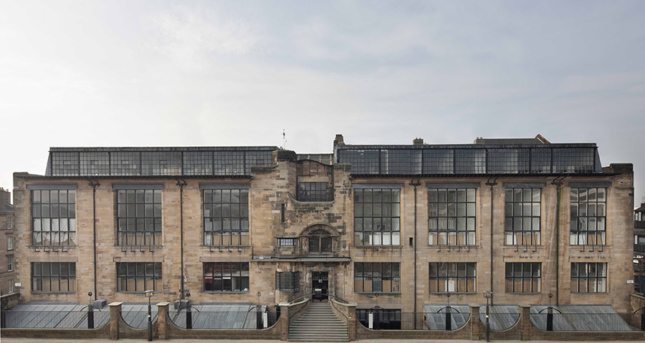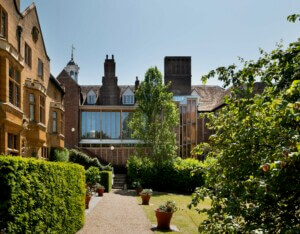In 2014, a fire sparked by a student project ripped through the Glasgow School of Art’s Mackintosh Building, ascending through the structure’s vertical shafts and voids, to devastate significant portions of the interior. Design team lead for the restoration of the Mackintosh Building is the Glasgow-based firm Page\Park Architects, who are at the forefront of architectural conservation in the United Kingdom.

Completed in 1909, the Glasgow School of Art was designed by Charles Rennie Mackintosh in his distinctive Arts and Crafts style, adorned with idiosyncratic detailing and complex arrangements of materials. The Mackintosh Building was built in two phases; the eastern section was opened in 1899 while the western section was completed a decade later.
According to Liz Davidson, the GSA Senior Project Manager of the Mackintosh Building Restoration, “Just over 50 percent of the structure remained relatively unscathed during the blaze, 30 percent was subject to damage stemming from the dual effects of intense heat and billowing smoke, and nearly 20 percent was utterly destroyed.” The latter category largely impacted the top floors of the building, which are home to the library, a gallery, and the upper loggia.

The process of restoration requires the study and evaluation of archival records and surviving materials as well as the sourcing of original materials. It also requires knowledge of traditional craftsmanship, a process Iain King, Depute of Conservation at Page\Park Architects, describes as “bringing craft back into the building.” This effectively reintroduces a forgotten level of craftsmanship to Scotland’s building industry.
The restoration process is also a transcontinental enterprise. The restoration of Studio 58, a Japanese-inspired gallery located on the top floor of the Glasgow School of Art, required century-old American yellow pine for its columns. Although yellow pine can be sourced across Europe and the United States, the century-old pine is superior in its structural strength and finish, and thus needed to be sourced from a pre-existing stockpile or building. In a twist of fate, the Massachusetts Cotton Mills Complex of Lowell, Massachusetts, which was partially demolished in 2016, had American yellow pine of the size and quality required. Eight 23-foot-long beams made the journey to Scotland in a shipping container and were craned above the roof of the structure.

The library of the Mackintosh Building was perhaps the culmination of the architect’s design ethos. Built of rich tulipwood, the room rose the full height of the projecting oriels punctuating the Western elevation, divided into an upper and lower gallery. The ongoing replication of the library involved the construction of a full-sized library prototype replete with tulipwood sourced from the United States, and decorated with Mackintosh’s distinctive pendants and scallops. Through the analysis of the library’s charred remnants, the design team was able to unlock information regarding the joinery of the woodwork, allowing for the replication of assembly, nailing and detailing.
The restoration of the Mackintosh building is expected to finish in spring 2019, with students returning back to the building in the autumn. For over a century, the building shaped and was shaped by generations of students. With this reciprocal relationship in mind, Iain King acknowledged that this authenticity cannot be restored to the building, but it can be reconstructed along the lines of the original design, “allowing future students to have their own memory of the building.”





















